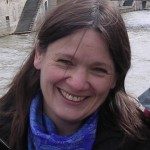Link to Pubmed [PMID] – 37633274
Link to DOI – 10.1016/j.xcrm.2023.101167
Cell Rep Med 2023 Aug; (): 101167
Bacterial pneumonia is a considerable problem worldwide. Here, we follow the inter-kingdom respiratory tract microbiome (RTM) of a unique cohort of 38 hospitalized patients (n = 97 samples) with pneumonia caused by Legionella pneumophila. The RTM composition is characterized by diversity drops early in hospitalization and ecological species replacement. RTMs with the highest bacterial and fungal loads show low diversity and pathogen enrichment, suggesting high biomass as a biomarker for secondary and/or co-infections. The RTM structure is defined by a “commensal” cluster associated with a healthy RTM and a “pathogen” enriched one, suggesting that the cluster equilibrium drives the microbiome to recovery or dysbiosis. Legionella biomass correlates with disease severity and co-morbidities, while clinical interventions influence the RTM dynamics. Fungi, archaea, and protozoa seem to contribute to progress of pneumonia. Thus, the interplay of the RTM equilibrium, the pathogen load dynamics, and clinical interventions play a critical role in patient recovery.


